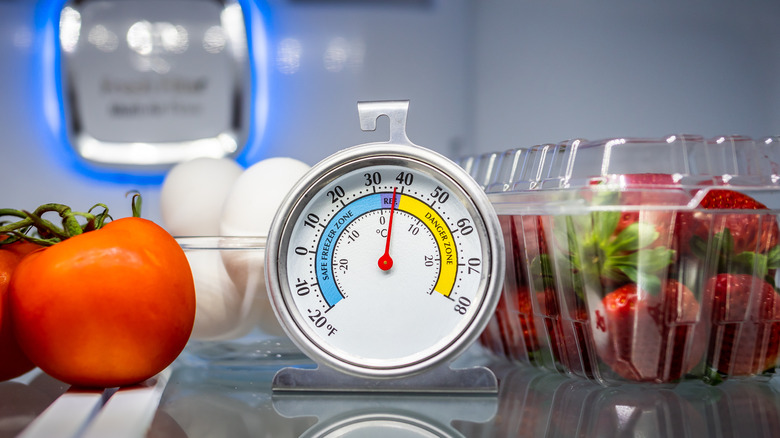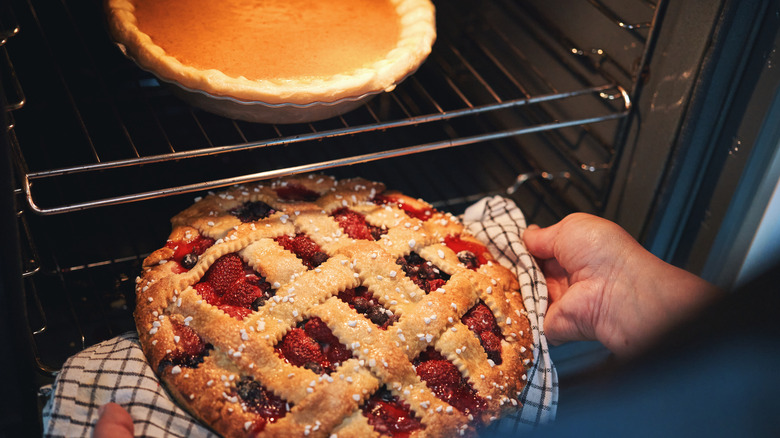What 'Room Temperature' Actually Means And Why It Matters
It may sound obvious at first glance, but when a recipe says to allow something to rest at "room temperature," knowing what target temperature is being referred to is quite important. After all, our kitchens can vary in climate quite a bit, ranging from sweaty hot when cooking and baking to chilly on a winter day. The recipe author clearly has a standard in mind that you should be observing. That Goldilocks room temperature is 70 degrees Fahrenheit — not too warm and not too cold!
Now that you know that key bit of information, you can make adjustments along the way if your kitchen temperature is out of range. You might need to find refrigerator space to chill products when the kitchen is above 70 degrees or work quickly to prevent the heat from impacting your recipe. On the other side of the thermometer, you can create a warmer spot by using your oven light to gently create heat in the oven or find another warm nook near the stove. Just be careful not to overcompensate accidentally!
How room temperature affects recipes
When a kitchen's ambient temperature is too warm, solid fats in baked goods soften, resulting in cookies that spread out when baked and butter leaking from pie dough. Chilling doughs between recipe steps can help in a hot kitchen. Yeasted bread doughs are also affected by too much heat since the bread can rise faster than expected. Softening butter or cream cheese at higher temperatures can make them too soft for their intended use.
If the air is too cold, fermented products such as kimchi, sauerkraut, and kombucha are slowed down excessively because their essential bacteria need a little warmth. A cold kitchen will slow down bread rising because the yeast is working more slowly. Cold kitchen temperatures are easier to manage because there are so many sources of warmth in a kitchen. But use care not to overheat delicate yeasts and starters, as they can be destroyed easily. A few degrees can make a difference in how your recipe turns out, so keep an eye on your kitchen thermometer.

